Intel SSD 520 Review: Cherryville Brings Reliability to SandForce
by Anand Lal Shimpi on February 6, 2012 11:00 AM ESTIntel was rumored to be working on a SandForce based drive for several months now, but even the rumors couldn't encapsulate just how long Intel and SF has worked on this drive. According to Intel, the relationship began 1.5 years ago. Still lacking a 6Gbps controller of their own and wanting to remain competitive with the rest of the market, Intel approached SandForce about building a drive based on the (at the time) unreleased SF-2281 controller. Roughly six months later, initial testing and validation began on the drive. That's right, around the time that OCZ was previewing the first Vertex 3 Pro, Intel was just beginning its extensive validation process.
Codenamed Cherryville, Intel's SSD 520 would go through a full year of validation before Intel would sign off on the drive for release. In fact, it was some unresolved issues that cropped up during Intel's validation that pushed Cherryville back from the late 2011 release to today.
Intel's strenuous validation will eventually make SandForce's drives better for everyone, but for now the Cherryville firmware remains exclusive. Intel wouldn't go on record with details of its arrangement with SandForce, but from what I've managed to piece together the Intel Cherryville firmware is exclusive for a limited period of time. That exclusivity agreement likely expires sometime after the SF-2281 is replaced by a 3rd generation controller. There are some loopholes that allow SandForce to port bug fixes to general partner firmware but the specific terms aren't public information. The important takeaway is anything fixed in Intel's firmware isn't necessarily going to be fixed in other SF-2281 based drives in the near term. This is an important distinction because although Cherryville performs very similarly to other SF-2281 drives, it should be more reliable.
As Intel has been working on this firmware for quite a while, it's likely that the 520 uses an older branch of the SF-2281 firmware that has been updated over the past twelve months.
The BSOD is Back, but Not on Intel
Back in October SandForce announced that it had discovered a firmware issue that resulted in unexpected BSODs on SF-2281 drives on certain platforms. Why it took SandForce several months to discover the bug that its customers had been reporting for a while is a separate issue entirely. SandForce quickly pushed out the firmware to OCZ and other partners. Our own internal testing revealed that the updated firmware seemed to have cured the infamous BSOD.
Just as background, our SSD testing is rarely over once the review goes live. Any drive we recommend gets tossed into a primary use machine somewhere within the company. We keep track of drive behavior, including any bugs or performance issues over time. This long term testing process takes place over months. The results of these long term tests are folded into future reviews and recommendations.
The BSOD is caused by a bug in SandForce's power state logic that ultimately results in the drive disconnecting from the system while it's running. It turns out that Windows isn't a fan of you hot un-plugging the drive it's running on, which results in the BSOD. We had two systems that exhibited the BSOD, both of which were fixed by the update last October.
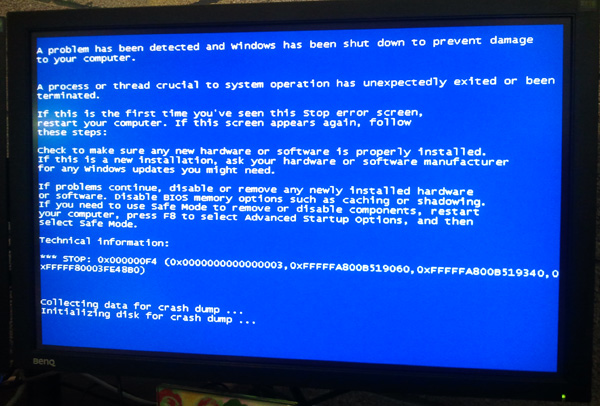
As luck would have it, our own Brian Klug happened to come across an unexpected crash with his 240GB non-Intel SF-2281 based SSD two weeks ago when he migrated it to another machine. The crash was an F4 BSOD, similar in nature to the infamous BSOD issue from last year. While two of the systems we reproduced the BSOD bug on were cured by last year's firmware update, Brian's system (an X58/Core i7 build) was BSODing regularly playing Battlefield 3. Games end up being a great way to trigger the SF-2281 BSOD issue as they frequently switch between periods of idle and load, which does a good job of stressing the power state logic in SandForce's firmware. I immediately sent Brian an Intel SSD 520 to see if the BSOD remained on Intel's drive. Switching to Cherryville caused Brian's BSODs to go away. Indeed most end user reports of SF-2281 BSODs went away with the fixed firmware, but we've still heard of isolated issues that remain unresolved. Whatever Intel has done with the 520's firmware seems to have fixed problems that still remain in the general SF-2281 firmware.
This is actually a dangerous precedent as it means one of two things. The first possibility is that SandForce has been made aware of flaws in its current firmware and chooses against (or is legally prevented from) disclosing it to its partners. The second possibility, and arguably even worse for SandForce, is that Intel was able to identify and fix a bug in the SF-2281 firmware without SandForce knowing it existed or was addressed. I suspect it's the former but as no one is willing to go on the record about the Intel/SandForce agreement I can't be certain.
Intel did go on record saying that the 520 is expected to have far fewer F4/F7 BSODs than any other SF-2281 drive. I asked Intel if I should read into the phrase "far fewer", but the answer was no - the 520 is expected to have similar reliability to the Intel SSD 510 and 320.
At the end of the day that's what Intel really brings to the table with the 520. As you'll soon see, performance isn't very different compared to other SF-2281 based drives. Intel's biggest advantage comes from the unique firmware that ships with the drive. Intel is also quick to point out that while other SF-2281 manufacturers can purchase the same Intel 25nm MLC NAND used on the 520, only Intel's drives get the absolute highest quality bins and only Intel knows how best to manage/interact with the NAND on a firmware level. While it's nearly impossible to prove most of this, the fact that we're still able to reproduce a BSOD on the latest publicly available SF-2281 firmware but not on the SF-2281 based Intel SSD 520 does say a lot about what you're paying for with this drive.
And you are paying a premium for the 520 compared to other SF-2281 based SSDs on the market today:
| Intel SSD 520 Price Comparison | |||||||
| 60GB | 120GB | 180GB | 240GB | 480GB | |||
| Intel SSD 520 (SF-2281) | $149 | $229 | $369 | $509 | $999 | ||
| Kingston HyperX (SF-2281) | N/A | $205 | N/A | $420 | N/A | ||
| OCZ Vertex 3 (SF-2281) | $95 | $190 | $240 | $375 | $850 | ||
| Samsung SSD 830 | $110 | $220 | N/A | $360 | $800 | ||
Last year Intel hinted at a move from the consumer market to enterprise server and client markets. The 520's higher price likely won't matter there, but for consumers the higher price is noticeable - particularly with good options from companies like Samsung now available on the market.


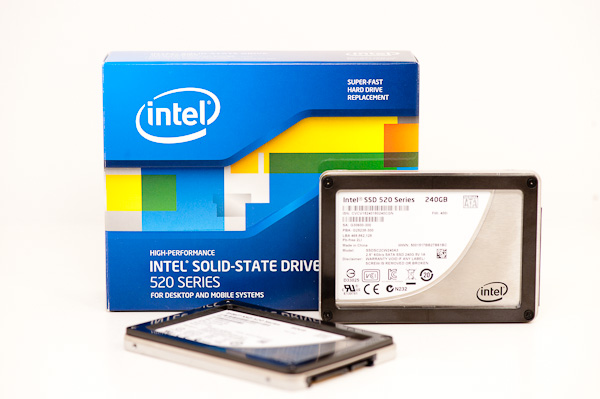
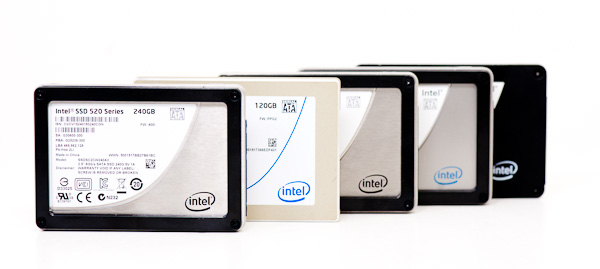
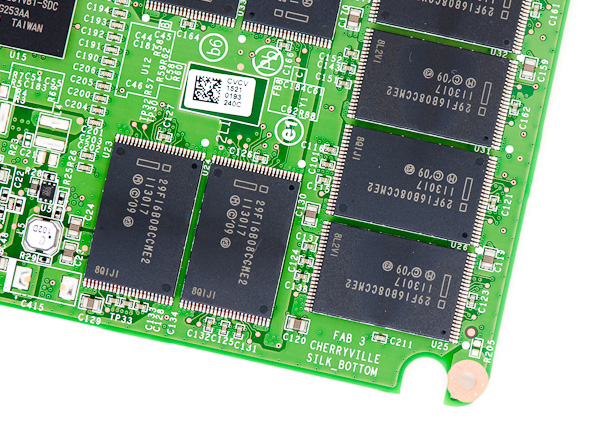
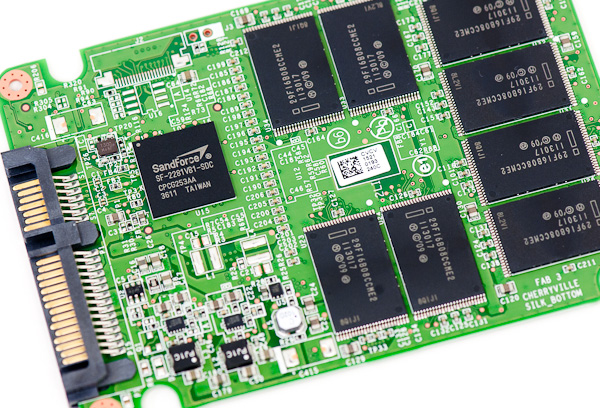








138 Comments
View All Comments
Iketh - Monday, February 6, 2012 - link
That price premium is doing me in, plus the irrecoverable drive thrashing. The 240gb Samsung will be my next purchase.Galcobar - Monday, February 6, 2012 - link
Find yourself having to ship a less reliable drive back to the manufacturer and the price premium disappears. At that point, not having to deal with the downtime and inconvenience of reinstallation is all gravy.Shadowmaster625 - Monday, February 6, 2012 - link
These drives are all built to pretty much the same physical quality standards. Firmware might be a different story, but for firmware it usually doesnt require a trip to the factory. Do you have any evidence to suggest that the physical build quality of an OCZ Vertex 2 is less than an Intel X-25?hackztor - Monday, February 6, 2012 - link
I had a vertex 1 that I had to ship back 4 times, finally I asked for a newer model. Got back the vertex 2. That right there is what Galcobar was talking about. Each time shipping is usually 10 bucks and about 2 weeks turn around time. Sometimes higher premium for better tested parts is worth the extra cost.pc_void - Monday, February 6, 2012 - link
The key word is sometimes.And sometimes you pay a higher price and have the same thing happen.
However, you can make an educated guess based upon lots of research. It still doesn't mean it won't happen.
Flunk - Monday, February 6, 2012 - link
I don't think firmware alone is responsible for the much lower failure rates of Intel SSDs over say... OCZ.I'm not saying other brands are bad, my Vertex 2 is still going strong with no issues, but these SSDs are built a little bit better than OCZ's drives and most of the other competition.
coder543 - Tuesday, February 7, 2012 - link
It's widely known that non-Intel SSDs have reliability issues. Recently they've gotten much better, but they still aren't yet comparable.taltamir - Monday, March 26, 2012 - link
The issue is that there are firmware bugs that intel fixed that sandforce and its other partners do not.You are right that there is no need to ship it back to the manufacturer... because they CANNOT fix it. A replacement drive will have the same bugs.
Your only recourse is to live with the bugs and BSODs or sell it second hand and buy an intel.
dmprok - Sunday, April 1, 2012 - link
I got Intel X-25 80Gb drive that failed on me TWICE in one year and I lost data. I picked Intel for TRIM function and because it was highly rated. First drive was purchased for $280 by my friend and it failed on him in 2 weeks, I thought he was doing something wrong, I bought dead drive from him and RMA'ed. It failed again for me in 6 months, one day computer just would not boot, I send it to RMA and got my 3rd drive, I hesitated to install for few months because I lost all faith in Intel SSD drives. I am not a heavy user, I don't run my PC 24/7, also the last drive drive I received does not look like quality made at all, the top of the drive is warped, I am disappointed, considering getting new Sandisk SSD for next upgrade.nsanity - Tuesday, February 7, 2012 - link
Having to ship a drive back means *absolutely nothing*. Hell, having to buy a complete new drive means nothing. The lost productivity when a business who has used a pair of SSD's as a shortcut to IOPS, as the machine BSOD's or drops an array till the system is physically powered off and on again simply dwarfs those costs.I'm a SMB Integrator and having to clean up after the mess of others who have used SF-2281 drives (Corsair Force 3 in particular) to achieve superior IOPS as opposed to using tried and true SAS arrays.
Random BSOD's and array's falling off a system is the plague i've seen with the SF-2281's. Firmware updates have really done nothing to help on the Corsair Drives.
On the Corsair Force 3 release, to enthusiast/gamer customers, I sold 3 drives, only to RA them 5 times within a month.
From that point I essentially told all my enthusiast customers that I would not sell them a Sandforce-based Drive, because I simply do not like unhappy customers, and nothing is more unhappy than someone bringing me a drive back within 48 hours.
I realise my sample size is small (Probably about 20-30 SSD's total), but I can tell you that out of the 15 Intel Drives I've seen/touched/supported (X-25M G2's, 320's and 510's), none of them have had any faults what so ever. Every, single, SF-2281 drive has had faults.
The advent of Intel making Sandforce based drives leaves me with very uneasy. Intel's reliability is second to none, but I need more than just an anecdotal review telling me that they've "fixed" the SF-2281. I've been burned on a small scale, and i've watched a fellow SMB integrator friend lose thousands of dollars in free labour trying to repair systems based on these drives.
I'm looking forward to Anand's part two, using these drives in an Enterprise scenario - and hopefully he's got a machine doing heavy load testing in the mean time to better report on the reliability- or otherwise of these drives.